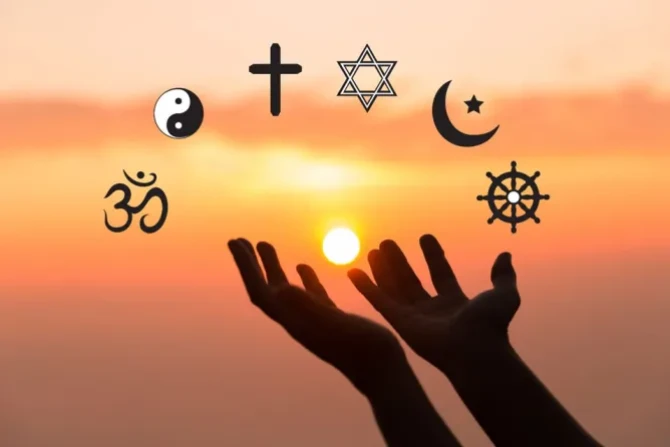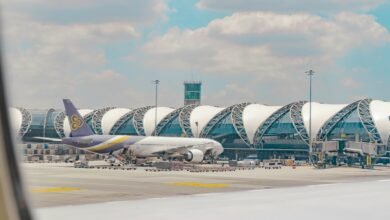
Thailand is a country known for its rich cultural tapestry, characterized by a diverse population that practices various religions and speaks multiple languages. This diversity contributes to the unique identity of the nation, making it an intriguing destination for travelers and scholars alike. Here’s a closer look at the religions and languages that shape Thailand’s cultural landscape.
Religions in Thailand
1. Buddhism
- Predominance: Buddhism is the dominant religion in Thailand, with around 95% of the population identifying as Buddhist, primarily of the Theravada tradition.
- Cultural Significance: The influence of Buddhism is profound, affecting various aspects of daily life, culture, art, and architecture. Temples (known as wats) are central to community life, and numerous festivals, such as Songkran (Thai New Year) and Loy Krathong, are rooted in Buddhist beliefs.
- Monastic Life: The Buddhist monastic community, or sangha, plays a crucial role in society. Many young Thai males enter the monastery for a period as part of their spiritual journey.
2. Islam
- Population: Islam is the second-largest religion in Thailand, practiced by approximately 4-5% of the population, primarily among the Malay ethnic group in the southern provinces.
- Cultural Presence: Islamic practices and festivals, such as Ramadan and Eid al-Fitr, are observed in various regions, particularly in the southern provinces like Narathiwat and Pattani. Mosques serve as community centers and are integral to the social fabric of these areas.
3. Christianity
- Population: Christians make up about 1% of the Thai population, with both Catholic and Protestant communities present.
- Cultural Integration: Churches can be found in urban areas, and Christian festivals like Christmas and Easter are celebrated, particularly among the expatriate and local Christian communities.
4. Hinduism
- Cultural Influence: Though practiced by a small percentage of the population, Hinduism has a notable influence on Thai culture, particularly in the realm of art, architecture, and festivals. Many Thais honor Hindu deities, and festivals such as Loy Krathong also reflect Hindu traditions.
- Historic Ties: Hinduism’s influence is evident in Thailand’s ancient history, with many royal ceremonies incorporating Hindu elements.
5. Folk Beliefs and Animism
- Cultural Practices: Alongside major religions, many Thais adhere to folk beliefs and animism, which include rituals and practices related to spirits and ancestors. This is particularly prevalent in rural areas, where traditional beliefs coexist with Buddhism.
Languages in Thailand
1. Thai Language
- Official Language: Thai, also known as Phasa Thai, is the official language of Thailand and serves as the primary means of communication for the vast majority of the population.
- Linguistic Features: Thai is a tonal language with five distinct tones, which can change the meaning of words. The script is derived from the Khmer alphabet, and learning it can be a challenge for foreigners due to its complexity.
- Regional Variations: While standard Thai is spoken nationwide, various regional dialects exist, including Isan (Northeast), Northern Thai (Lanna), and Southern Thai.
2. Minority Languages
- Ethnic Diversity: Thailand is home to numerous ethnic groups, each with its own language. For example, the Malay community in the south speaks a variant of Malay, while the hill tribes in the north speak languages such as Karen and Hmong.
- Chinese Communities: Due to a significant Chinese population, several Chinese dialects, including Cantonese and Hokkien, are widely spoken, particularly in urban areas.
3. English Proficiency
- Common Usage: While Thai is the official language, English is commonly used in tourist areas, businesses, and higher education. Many Thais in urban settings, especially the younger generation, have a basic understanding of English.
- Tourist Interaction: In popular tourist destinations, signage and menus are often available in English, making it easier for visitors to navigate and communicate.
Conclusion
Thailand’s rich tapestry of religions and languages reflects its cultural diversity and historical influences. Buddhism stands as the cornerstone of Thai identity, while Islam, Christianity, and other belief systems contribute to the nation’s cultural mosaic. The Thai language, with its regional dialects and minority languages, further enhances the country’s uniqueness. Understanding these elements is essential for anyone looking to explore the depth of Thailand’s culture and society, making it a rewarding experience for both locals and visitors.



